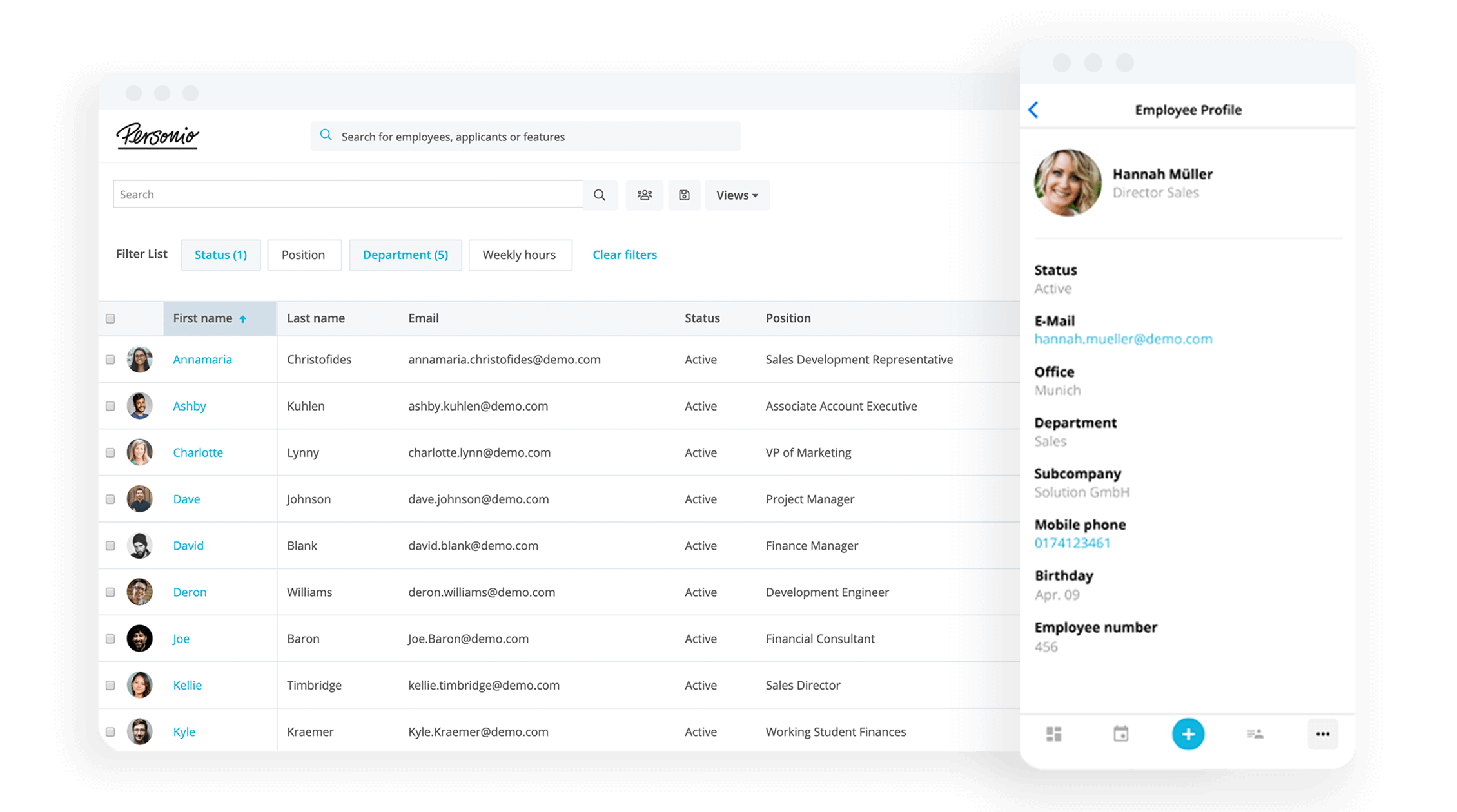Code of Conduct for Employees: A Guide for Managers
If you think a code of conduct is ‘too much’ for your company, you may want to reconsider. Over 85% of Fortune 200 companies have a code of conduct and over half report that they have used the document to solve disputes in their company.
A code of conduct isn’t just a document that you have for the sake of having it; it’s an active document that you use to align all the employees and management team around a set of accepted and allowed behaviours in the workplace.
Need somewhere to store contracts? Learn about Personio’s digital employee file today.What is a Code of Conduct for Employees?
A code of conduct is a set of guidelines created to help employees understand how they must behave at work. It usually takes the form of a document informing employees of an organisation on acceptable behaviour (whether remote or in the workplace).
In addition, a code of conduct will typically define unacceptable behaviour. This could include workplace harassment, bullying, belittling others, inappropriate physical contact, etc.
A code of conduct should be handed to every employee so that they can read it thoroughly and understand what is expected from them when they’re at work.
But first, you need to have a code of conduct in place. Here’s how to begin writing one…
Who is Involved in Writing a Code of Conduct?
In most instances, it’s an organisation’s HR team that creates the code of conduct. But they hardly create the code. There’s always input from the managerial and leadership team, as well as from employees working in the company.
Since your employees are going to be the ones that will have to live the behaviour requested in the code of conduct, it’s always good to listen to feedback when drafting your document.
How Do You Write an Employee Code of Conduct?
Creating a code of conduct is quite a rather straightforward process, but it is far from easy. It’s an iterative process that needs to clearly distinguish between acceptable and unacceptable behaviours in the workplace.
The process typically consists of four steps:
Creating a draft of the document: The first step is for the HR team to write a first draft of the document. Here, the HR team writes down all of the behaviours that they believe are acceptable and unacceptable.
Sharing the draft: The second step is to share the first draft with the company’s managers and employees. The HR team does this to collect essential feedback that will make the code the conduct better and more all-encompassing.
Finalising the document: Once HR has collected the feedback from employees and managers alike, it’s time to include that into the document and finalize it.
Tracking implementation: The last step is for the HR team to distribute the code of conduct to all employees and managers and then track the behaviour in the workplace to see if it follows the guidelines written in the document.
Over time, your HR team may iterate and makes changes to the document and share a revised version with every employee.
Centralise your employee data

Stop relying on lists and spreadsheets. Organise and edit personnel files and documents with ease, all in one secure, legally compliant place.
Protect your people filesGet Inspired: Code of Conduct Examples
In case you’re struggling with creating a code of conduct for your company, you should look into some of the following examples for inspiration.
All of the below-mentioned companies have invested a lot of time into their code of conduct and have a set of characteristics that make them great.
In short, it is written for the people who will read it (no jargon), comprehensive, easily accessible and supported by the leadership team of the organisation.
Coca-Cola’s code of conduct
Employee Codes of Conduct: Frequently Asked Questions
What is an Employee Code of Conduct?
An employee code of conduct is a document that informs all employees of an organization about acceptable behaviour when they’re at work (remotely or in person).
Who Writes a Code of Conduct?
It’s usually the HR team, but with the input from the leadership team and all employees.
How Do You Write a Code of Conduct?
Writing the code of conduct is a four-step process: Creating a document draft, sharing the draft with the managerial team and the employees, finalizing the document and sharing it with all employees and tracking the implementation of guidelines from the document and iterating when needed.
What are Examples of Employee Codes of Conduct?
Coca-Cola, Google, Sony, Starbucks and Kellogg’s all have great examples of employee codes of conduct.
Create a Code of Conduct Before You Need One
It’s better to have a code of conduct and not need it than not have a code of conduct and need it. So if you don’t have a code of conduct, discuss with your HR team about creating one.
This will also help employees realise how they need to behave in the workplace and it will help the HR team deal with any problems and disputes that arise during the workday.
In case you need additional help, you should read The Essential Elements of a Great Staff Handbook in our HR lexicon.

